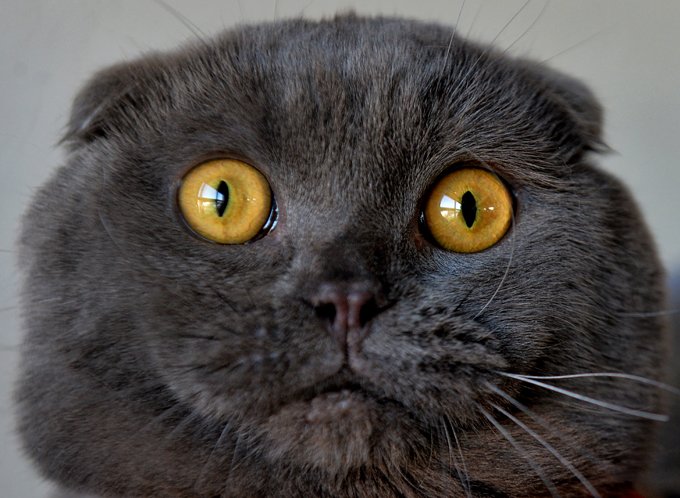This article courtesy of PetMD.com.
Diabetes Mellitus Without Complication in Cats
Diabetes is a disorder of carbohydrate, protein, and fat metabolism caused by an absolute or relative insulin deficiency. Metabolism refers to how the body digests and uses food for growth and energy, and this process is largely dependent on a sufficient amount of insulin in the body.
Insulin is a hormone that is produced in the pancreas, releasing into the cells in response to the digestive conversion of proteins into glucose in the bloodstream. Much of the food that is ingested is broken down into glucose, a type of sugar in the blood and one of the body’s main sources of energy. Appropriate insulin function will trigger the liver and muscles to take up glucose from the blood cells, converting it to energy.
In diabetes, there might be an absolute shortage of insulin (Type I), or the cells may not be responding appropriately to the insulin, a condition termed insulin resistance (Type II). Both of these conditions will prevent the muscles and organs from converting glucose to energy, and will result in excessive amounts of glucose in the blood. Excessive blood sugar is also referred to as hyperglycemia.
Diabetes, a common condition for humans, is also relatively common in domestic animals like cats. Type I diabetes is the more severe form of the disease, and is dependent on insulin injections for maintaining blood sugar balance (insulin dependent diabetes mellitus – IDDM).
In cats, Type II diabetes, a non-insulin dependent diabetes mellitus (NIDDM), is the more common form to be diagnosed, but eventually, almost all cats that are diagnosed with diabetes, in either form, will need injections of insulin to keep the blood sugar balanced. An estimated one in 1200 cats will develop diabetes during its life-span. At heightened risk are obese cats and male cats. Most cases are seen in cats middle aged and older, but it can occur at any age.
Symptoms and Types
- Obesity
- Excessive thirst
- Excessive urination (increase in both frequency and amount of urine)
- Poor appetite
- Weight loss
- Wasting of back muscles
- Weakness in back legs
- Oily coat with dandruff
- Enlarged liver
- Jaundice
- Lethargy
- Ketoacidosis – metabolic acidosis caused by the breakdown of fat and proteins in the liver in response to insulin deficiency
- Depression
- Vomiting
Causes
- Genetic susceptibility for some – usually Type I in younger cats
- Inflammation of the pancreas (pancreatitis)
- Occurs concurrently with certain diseases:
- Hyperthyroidism
- Cushing’s Disease
- Use of certain drugs
Diagnosis
Your veterinarian will take detailed medical history from you of your cat’s health leading up to the onset of symptoms and details of the exact symptoms. Standard tests will include a complete blood count, chemical profile, and urinalysis. These tests should be sufficient for diagnosis and initial treatment.
Typically, with diabetes, an unusually high concentration of glucose will be found in the blood and urine. Abnormally high levels of liver enzymes and electrolytes imbalances are also common. Urine test results may also show evidence of abnormally high levels of ketone bodies – water-soluble compounds produced as a by-product of fatty acid metabolism in the liver and kidney. A numbers of other abnormalities may also be found.
Radiographic studies, including x-rays and ultrasonography, can be helpful for the diagnosis of concurrent diseases and complications due to diabetes. Abdominal X-rays and ultrasound will help to determine the presence of kidney stones and/or inflammation of the pancreas and liver, as well as other associated abnormalities. In the case of liver disease, should it appear suspect, your veterinarian may decide to take a sample of liver tissue for further diagnostic evaluation.
Treatment
Most patients’ diabetes can be managed without complications, but for some cats the situation may be more challenging. Your veterinarian will make an individual treatment and management plan for your cat based on the cat’s current disease status. There are various types of insulin available and a selection of the type that is appropriate to your cat will made by your veterinarian. For instance, some patients need daily insulin therapy and the doses are calculated according to the weight, age, gender and individual insulin requirements of the affected cat. Depending on how severe the diabetic condition is, and how the amount of insulin in the body variates from day to day, you may need to evaluate your cat’s blood glucose levels on a daily basis and adjust the insulin dose accordingly.
After the initial treatment has stabilized your cat, your veterinarian may recommend ovariohysterectomy, if you have a female cat, as hormones during heat make management of diabetes difficult.
Living and Management
Management of your cat at home is more important in overall treatment efforts. Your cat will require daily activity but strenuous exercise is usually best avoided. Obesity is one of the major risk factors for diabetes, and this condition can make management of diabetes difficult, but it can only be brought under control slowly and with great care.
Soft and moist foods will have to be avoided because they cause rapid accumulation of glucose in the body. However, do not change your cat food suddenly and without first discussing it with your veterinarian. Your cat will need a well-thought out and strictly enforced diet plan. Your veterinarian can help you to design a plan that is well suited to your cat’s needs, with life-style changes to facilitate proper management of the diabetes.
Regular monitoring of glucose levels in diabetic cats is important for evaluating the overall status of the disease. Your veterinarian will brief you on what to look for in case of either hypoglycemia (low levels of glucose) or hyperglycemia (high level of glucose), both of which can be seen in diabetic cats. Keeping a daily and weekly chart of your cat’s diet, glucose test results, daily insulin dose, and weekly body weight is highly recommended for following patterns and recognizing when your cat deviates from it’s regular pattern.
Do not give any drug to your cat without first discussing it with your veterinarian, as many drugs will adversely affect diabetic patients.
The success of your cat’s health will be dependent on your willingness to adhere to these dietary recommendations. If properly managed, diabetic patients do well and usually have normal life-spans.
This article originally appeared here on PetMD.com.









